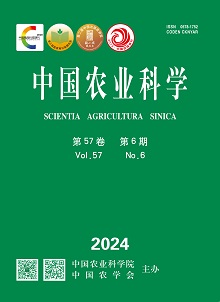【Objective】 This paper assessed the carbon footprint and water footprint of major food crops in the northwest region, and established a multi-objective planting structure optimization model based on the carbon footprint and water footprint to adjust the spatial distribution of food crops in each province, so as to provide a theoretical basis for reducing carbon emissions and enhancing water resource management. 【Method】 Based on the planting area, yield, and agricultural inputs of wheat, maize, and rice in the northwest region, the carbon footprint was evaluated using Life Cycle Analysis (LCA); Based on evapotranspiration and effective precipitation, the water footprint was evaluated by Penman-Monteith formula; Multi objective optimization of the layout of three major grain crops in the five northwest provinces was performed based on entropy weight method. 【Result】 The data showed that the carbon footprint and water footprint of wheat, maize and rice in northwest China from 1999 to 2020 showed significant differences in different provinces. In the northwest region, the carbon emissions from the production of three grain crops, wheat, maize and rice showed a distribution pattern of higher levels in the eastern and western regions and lower levels in the central region; the range of carbon footprint per unit production (PCF) was 0.36-0.63, 0.33-0.56, 0.57-0.97 t CO2-eq·t-1, respectively; the carbon footprint per unit area (FCF) was (2.46±0.77), (3.21±0.49) and (5.57±0.91) t CO2-eq·hm-2, respectively. From 2010 to 2018, the total green water content of wheat, maize and rice in the northwest region showed a steady upward trend, with regions with higher average green water content distributed in Shaanxi, Gansu, and Ningxia. The total amount of blue water showed an upward trend from 2010 to 2015, and a downward trend from 2015 to 2018. The regions with higher average total blue water were distributed in Gansu, Ningxia, and Xinjiang. Among the three major grain crops in northwest China, maize consumes the least blue water footprint, with an average blue water footprint of 0.45 m3·kg-1; the blue water footprint consumption of rice was the largest, and the average production blue water footprint was 0.77 m3·kg-1. The optimization of food crop cultivation structure was performed, based on carbon and water footprints, using the cultivated area of different crops in each province as decision variables, and setting optimization scenarios focusing on reducing carbon emissions (ecological benefits) and increasing green water use (water resource benefits) according to different weights. In Scenario 1, the total carbon emissions decreased by 1.9% and the total green water increased by 5.0%; In scenario 2, the total carbon emissions decreased by 11.8%, while in scenario 3, the total utilization of green water increased by 6.7%. 【Conclusion】 There were significant spatial and temporal differences in carbon emissions and total water volume of the three major food crops in the Northwest Region. In terms of carbon footprint, the average FCF of the three major grain crops in the region shows an increasing trend, and the PCF shows a decreasing trend. In terms of water footprint, the green water footprint of the three major food crops in the region was higher than the national average, with maize having the largest green water footprint and rice having the smallest green water footprint. Under the premise of ensuring food crop security, the planting area of wheat has increased by 6.7%, while the planting area of maize and rice has decreased by 5.8% and 8.0%, respectively. The economic, resource, and ecological benefits have all been improved to a certain extent. In summary, multi-objective optimization could improve the utilization of green water resources, reduce carbon emissions, and alleviate environmental pressure.









